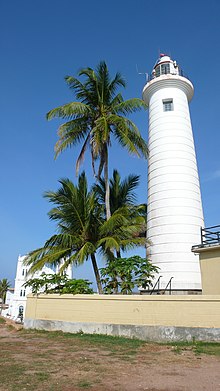Galle

Galle Fort Aerial Overview
Galle Fort is the finest and most intact fortified city build by the former European colonial powers in Asia. The narrow streets of Galle Fort are lined with Dutch merchant villas, pillared verandas, carved doors and windows. British and Dutch period offices are still in use. This is a living world heritage city with residents walking the 300 year old ramparts at sunset. Strolling along the high rampart walls you will see the Old Dutch and English churches, the Governor's house, the massive VOC warehouses, the Square of Courts, the elegant pillared facade of the old Dutch hospital, the Portuguese Black Fort, the lighthouse, the Clock Tower and much more.

EXPLORING GALLE FORT
Some historians claim that Galle with its C17th Dutch fort may be the old testament Tarshish, the fabled sea emporium of ancient times from where King Solomon obtained his gems, spices and peacocks. In 1344, the famed Moorish world traveller from Tangier, Ibn Batuta, stayed briefly in Galle and found Arab sailing ships in its harbour. Today, Galle Fort is a UNESCO world heritage site and the "quiet town dreaming by the sea" with the ghosts of history wandering the ramparts surrounding the Fort's maze of narrow streets, has again become a destination for discerning globe trotters.
The Portuguese were the first Europeans to arrive en masse in Galle. The Fort, however, for good reason, will always be more closely associated with the Dutch than the Portuguese. After a bloody siege in 1640, the Dutch seized Galle Fort and began constructing the magnificent 36 hectare hexagonal stone fort that survives intact to this day.
It is in this early Dutch period that the long history of Amangalla, formerly the New Orient Hotel, Amanresorts' newly restored luxury property in the heart of Galle Fort begins. An C18th Dutch East India Company (VOC) map shows what later became the south-east wing of the present hotel, as the Dutch Commandant's residence. A separate building on the same site probably housed officers from the Dutch garrison. Both buildings date from around 1864 when the Dutch moved their main seat of government from Galle to Colombo
The main attractions are Galle Fort; a world heritage site and former fortified town and ramparts of the Dutch East India company. This is the finest and most intact fortified city built by Europeans in South Asia. The Dutch Groote Church or the Dutch East India Company (VOC) built Dutch Reformed Church has been painstakingly restored. Its floors are made from C17th Dutch gravestones and its walls have Dutch family crests.
| |||||||||||||||||||||||||||||||||||||||||||||||||
 | |
Galle Dutch Fort
Galle Lighthouse
From Wikipedia, the free encyclopedia
Galle Lighthouse is an offshore Lighthouse in Galle, Sri Lanka and is operated and maintained by the Sri Lanka Ports Authority. This is Sri Lanka's oldest light station dating back to 1848, but the original lighthouse was destroyed by fire in 1934. The light station is within the walls of the ancient Galle fort, a UNESCO world heritage site and well known tourist attraction, making this the country's most often visited lighthouse.




No comments:
Post a Comment